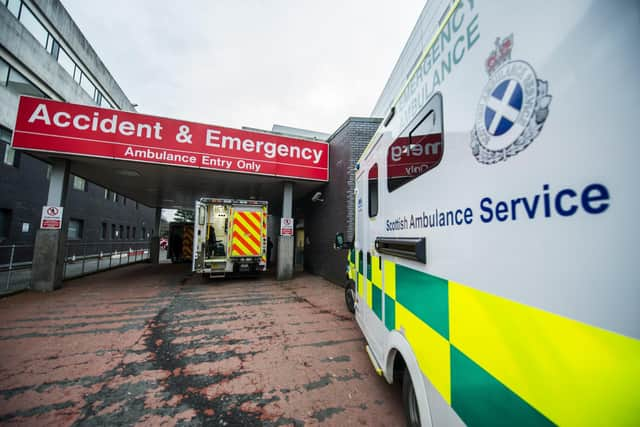Exclusive:Emergency crews raise concerns after ventilation contamination at Scotland’s biggest ambulance station
Emergency crews have raised concerns after the ventilation system became contaminated in Scotland’s biggest ambulance station.
Dead pigeons and other potentially infectious material was found in the air ducts at Edinburgh City station in King’s Haugh. The Scottish Ambulance Service (SAS) has been accused of keeping workers in the dark over the scale of the problem.
Advertisement
Hide AdAdvertisement
Hide AdIt comes fours years on from two patients dying at a flagship hospital after having contracted a cryptococcal fungal infection linked to pigeon droppings.


The airborne disease at the Queen Elizabeth University Hospital in Glasgow was blamed after patients inhaled the fungus cryptococcus, usually found in soil and pigeon droppings.
GMB Scotland, the biggest union in the service, is urging management to detail the scale of the problems at Edinburgh City station, which remains partially sealed off after the contamination was exposed five weeks ago.
Emergency crews have nowhere to sit but the kitchen, the union said, after other parts of the station, including the team leader’s office, crew room and training room were sealed while emergency remedial work, expected to be completed by Wednesday, is underway.
Staff have been told a deep clean of the affected areas will take place after the repairs by specialist contractors and before the sealed-off areas are reopened.
Senior SAS managers have moved to reassure staff, insisting in an email: “For reassurance, the risk of exposure has been deemed as extremely low risk by our infection control and H&S [health and safety] teams.”
However, GMB Scotland organiser Karen Leonard said the key workers who make up its staff would want to know exactly what contamination was found and what had been done to make the system safe.
She reported the contamination and the rising concern of crews to the Health and Safety Executive, but has been told it could not investigate while remedial work is underway.
Advertisement
Hide AdAdvertisement
Hide AdMs Leonard is now urging ambulance service executives to reveal the risk assessments undertaken and the work being done.
She said: “Large parts of the station continue to be closed, which offers little comfort to staff told to accept there is no risk. If a risk assessment has been done as stated, let staff see it. If another is to be done before the all-clear is given, let the staff see that too.
“All related paperwork should be laid out for staff and let them decide the level of risk. To simply insist that all is well without any documentation or detail is unacceptable and only serves to deepen suspicion among staff.
“This has been an object lesson in how not to handle such a situation and staff deserve better.”
NHS Greater Glasgow and Clyde launched an inquiry into the 2019 incident at QEUH, with the-then Scottish health secretary Jeane Freeman ordering a review of the design of the building.
Speaking at the time, Ms Freeman commended the health board for dealing with the infection “thoroughly”, but added: “We need to be absolutely sure about the current state of this infrastructure – what do we need to fix, how has that arisen and what are the lessons for our buildings elsewhere in the health service."
In 2020, the family of one of the victims, Gail Armstrong, 73, claimed they no longer trusted Glasgow's health board would be honest and open about the cause of death.
A Scottish Ambulance Service spokesperson said: “The Scottish Ambulance Service undertakes regular proactive assessments of our buildings and environments. The location was non-clinical and as soon as the minor issue was identified, immediate action was taken to rectify the situation based on expert guidance from our infection prevention and control team.
"Staff welfare is of paramount importance to us and following a comprehensive risk assessment, no risk to staff was identified."
Comments
Want to join the conversation? Please or to comment on this article.
